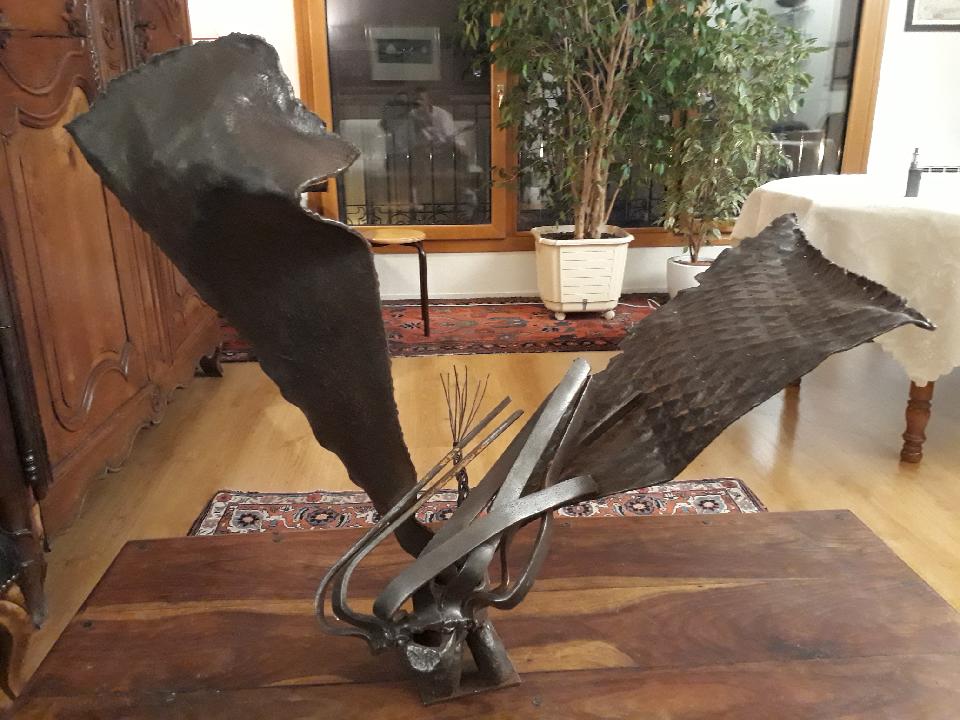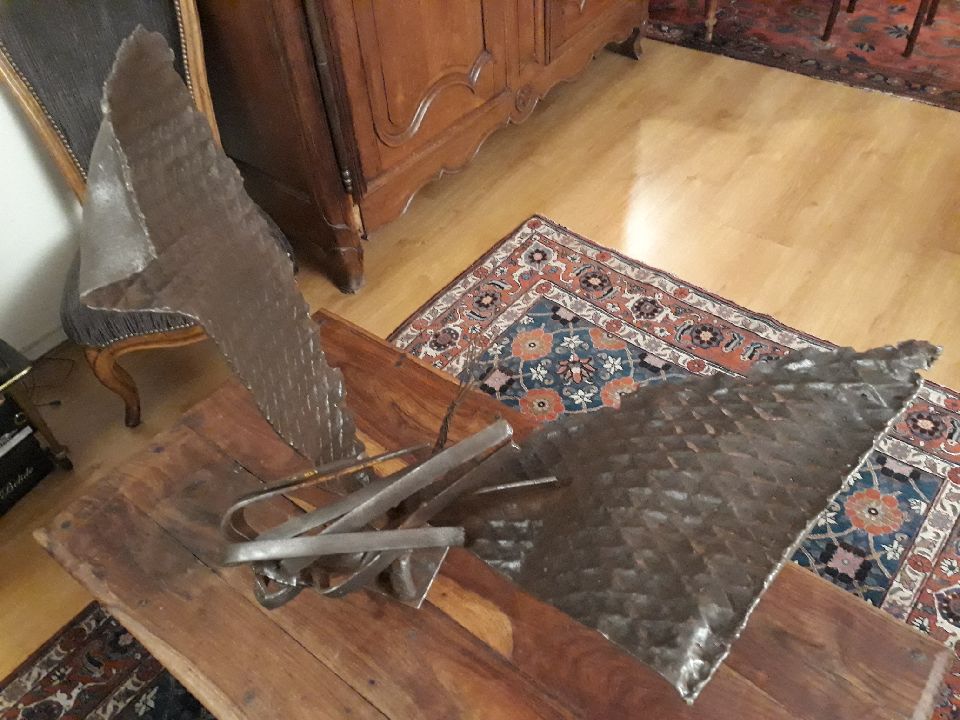Civilization is opposed to barbarism, it’s even the exact opposite.
It arises from the consciousness of men and women who carry meaning, who refuse to surrender to evil and, through their social fertility, contribute to promoting life, health, education, art and fundamental rights.
These men and women anchor their efforts in a form of humanism...
Civilization is opposed to barbarism, it’s even the exact opposite.
It arises from the consciousness of men and women who carry meaning, who refuse to surrender to evil and, through their social fertility, contribute to promoting life, health, education, art and fundamental rights.
These men and women anchor their efforts in a form of humanism, a set of positive values, an ideal beneficial to human beings. At the forefront of this fight against evil, doctors, teachers, soldiers, builders and so many others fight without compromise any erosion allowing evil to prevail: “Because, I have seen too often pity goes astray”wrote Antoine de Saint-Exupéry (Citadel). Pegasus has long magnified this path in the human mind, strength in the service of good, it puts its power in the service of Life.
One way to find this strength is to apply one's body to discipline and practice unifying meditation with the mind. Then, emptiness and inner silence can arise to reconnect with an original vision, the first representation of an intact vitality, of a creative energy from which civilizations are made.
This sculpture by Pierre Le Caër represents this path of action. It is tempered by a search for balance of form so that, not only "the sculpture stands upright" as Pierre likes to say, but above all that beyond a powerful gaze, an aura emerges from it.
An authentic artistic approach based on a background acquired through study and uncompromising work, it testifies to the way that animates it, to the special bond it forges with the world. From his personal work resulting from a particular asceticism, from an integrity and a constant effort to simplify himself, he retains to present it the idea that he has at the bottom of the effectiveness of the good.
Pierre Le Caër's metalwork affirms a martial essence that the beauty and balance of movement temper to place it skill fully but resolutely on the side of an assumed humanism.
Pegasus takes the form of the dragon, bearer of fire, with a muscular neck, majestic wings, outstretched as in full flight.
It personifies the creative energy and immortality of the warrior. It comes from the ages, from many places in the world.
To represent the dragon, we have to go back to the source, to the first, immemorial force.
It is to create a link beyond the times, collecting ancient legacies, agreeing to be part of a chain of millennial knowledge, in a lineage made up of secrets of fights, nerves, struggles, ancestral knowledge transmitted since the origin so that a voluntary humanism can live today.
Nimble and swift riders can thus feel carried by their horses as on the wings of a dragon.
“For the stallion, its gait was less racing than flight. Suspended, stretched out in the air, it only touched the ground to detach itself from it with a single beat. "- Joseph Kessel - (The Horsemen).
The dragon's power, however, is softened by its wings, huge wings moving like thought.
The work of form structures the successful balance of this sculpture. It gives it an expression of serenity.
Balance says as much as substance, and, this is true, of course, beyond artistic creation.
The more power there is in human beings, the greater their responsibility and, more importantly, their way of doing things.
Only a balanced form saves power and prevents it from falling into a pipe dream.
The artist presents his sculptures as standing objects, "tatemono" in Japanese.
This is an essential point which means that balance channels energy, power, destructive if not. It is the work on oneself to find the balance which allows the human being to be realized, to adopt a benevolent philosophy, to form peaceful relations and to collaborate with others.
We are in the presence of a personal work that invites human beings to rise through the introspection necessary to control their strength and preserve it, humanist in the government of men.
Its immense wings give it a mystical, mysterious force, they open to the imagination.
Their amplitude, their beat seems to be able to reach an indescribable, a dizzying height opened.
Does Pegasus mean that human beings must endow themselves with a divine ally? Not necessarily, because the fighter is wary of the gods: "Venerate the Buddhas and divinities but do not count on them", enacted the medieval Samurai Miyamoto Musashi (Dokkôdô).
Pierre Le Caër's Pegasus does not rule out spirituality, its immense wings are grafted onto it by the divine, but on one condition that spirituality does not itself become an alienation. It is always the same condition of balance, work on oneself, personal asceticism to awaken one's conscience, the only possibility at bottom of living without regretting one's actions and not falling into the remorse that Victor Hugo illustrated: “Seas in the country that has been since Assur (...) when he was seated in his chair in the shade, and when the tunnel was closed on his forehead, the eye was in the grave and was looking at Cain” (The Legend of the Ages).
Antoine de Saint-Exupery also expresses this requirement of conscience when he concludes his work on his definition of spirituality "For You are, Lord, the common measure of one and the other. You are the essential knot of various acts". (Citadel)
Consciousness imposes, beyond meditation, the only worthwhile introspection, that of the human being on himself, on the acts he performs every day, on the choices he makes. How much harm would be avoided if this introspection were practiced in good faith, deep inside, outside the grip of institutions quick to oppose, and ultimately to confiscate from human beings their true share of the divine.
Dogma is an alienation of thought which an awakened conscience puts in its place, preferring to excessive speech, laughter, song, dance, art, as a means of honoring creation. "And the beasts were dancing" wrote Joseph Kessel (The Lion).
One form of wisdom is without the mind taking over the body, without the body taking over the mind, in a process of unity.
Pierre Le Caër's work as a sculptor is akin to a research of this order, he delivers this message with his hands, the material collaborates with him to give birth to the expression of his vision of balance: a breathing between force and mind.
Artistic creation allows for a wide-ranging exchange. The work of art is unique in that it can create a form of timelessness to tie the threads of a conversation with other eras, other works, which it questions, to which it responds, forming in this discussion of resonant chords. From the emotions it provides and the ideas on which it is based, the work of art, freed from time, allows us to reflect on the meaning of life. How good it is, therefore, to visit dear friends for some over three thousand years old, such as Gudea, prince of Lagash or Ebih-Il, scribe with lapis lazuli eyes who have transmitted us from eternity their Mesopotamian hello.
It is with them, by an association of idea and form, not far from the black basaltic stele of the code of Hammurabi, as coming from an eternal struggle waged by former masters bearers of meaning, ultimately in the name of the same conception of the human being” which the Pegasus of Pierre Le Caër talks about.
This work joined a private collection, but there is today in the country of Iroise, a large building near a clump of trees where Pegasus has hundreds of brothers and sisters. A Breton stopover not to be missed for lovers of contemporary sculptures.













